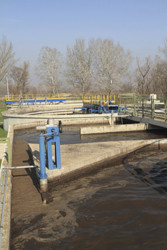Role of microorganisms in activated sludge
An EU-funded initiative developed mathematical models and conducted laboratory experiments to better understand microorganisms in activated sludge floc used in sewage treatment. Floc comprises suspended microorganisms and particles and is the main processing and oxygen-consuming component in activated sludge wastewater treatment reactors. The EU-funded 'Floc modelling in activated sludge and beyond' (FLOMAS) project studied microbial communities from a municipal wastewater treatment plant. Floc size and structure significantly affect the energy demands of activated sludge and understanding its formation is an important step in learning to control the treatment process. FLOMAS used a combination of fluorescence in situ hybridisation and confocal laser scanning microscopy to study floc samples. The resulting images showed the different shapes and sizes of the flocs and revealed the formation of micro-colonies of ammonia-oxidising bacteria and nitrate-oxidising bacteria. The information was used to create a first-generation multi-scale computational model showing the formation of activated sludge flocs at the micro scale. It also revealed reactor performance at the macro scale. These results were used to develop a multi-scale multispecies model of the activated sludge wastewater treatment system. Modelling techniques developed under the auspices of FLOMAS can be applied to other engineered biological systems such as in an upward flow anaerobic sludge blanket reactor. They can also help scientists gain a clearer understanding of natural systems, such as 'marine snow' — the continuous shower of particulates from the upper layers of the ocean.
Keywords
Floc, activated sludge, wastewater treatment, microorganisms, sewage







